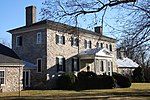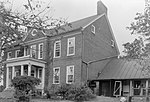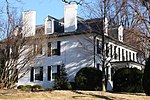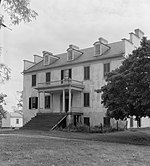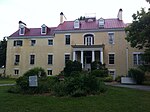Barleywood
Houses completed in 1842Houses in Jefferson County, West VirginiaHouses on the National Register of Historic Places in West VirginiaNational Register of Historic Places in Jefferson County, West VirginiaNeoclassical architecture in West Virginia ... and 3 more
Plantation houses in West VirginiaPlantations in West VirginiaWashington family residences
Barleywood is a farm in Jefferson County, West Virginia, on land once owned by Samuel Washington, brother of George Washington. The farm is close to Samuel's manor house, Harewood, from which the Barleywood property was subdivided in 1841. The Barleywood house was built in 1842, as well as several outbuildings which survive. The house sat vacant from the 1960s to the late 2010s and during that time it suffered from vandalism. It is now a private residence.
Excerpt from the Wikipedia article Barleywood (License: CC BY-SA 3.0, Authors).Barleywood
Declaration Drive,
Geographical coordinates (GPS) Address Nearby Places Show on map
Geographical coordinates (GPS)
| Latitude | Longitude |
|---|---|
| N 39.315 ° | E -77.911666666667 ° |
Address
Declaration Drive
Declaration Drive
25414
West Virginia, United States
Open on Google Maps
